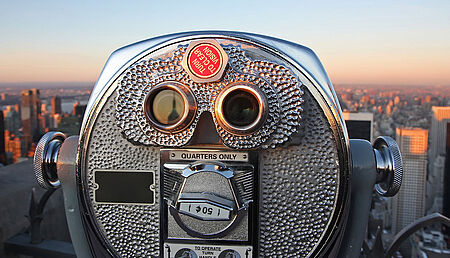
Building brand identity with trademarks and industrial designs
Whether minimalist or retro, modern or casual, design is not just about aesthetics; it is a fundamental component of a brand's identity. From logo to color scheme, typography to website layout, every stylistic element plays a crucial role in conveying a business's philosophy, selling proposition and consumer promise.
However, the path to commercial success is rarely clear-cut. To help along the way, Intellectual Property (IP) rights define how an organization can legally distinguish itself from rivals and protect its brand.
Particularly relevant to IP's role in cultivating a brand identity are trademarks and industrial designs. While similar at first glance, these protections can cover different elements and must comply with separate regulations, meaning companies need to consider both when establishing their products' defining features.
Two sides of the same coin: trademarks and industrial designs
When talking about brands, trademarks usually spring to mind as the go-to IP right. Covering public-facing elements such as words, phrases, symbols, patterns and images, trademarks are extremely versatile and well-equipped to designate the origin of goods and services to consumers.
However, many aspects of a brand are not suited to be made exclusive via trademarks. For instance, while three-dimensional shapes can be eligible for trademark registration, this is a better match for "heritage" products that see little to no change over time. As may more often be the case, the relevant branding elements could simply be descriptive or non-distinctive, ruling out trademark protection. Industrial designs do not have these same limitations.

As a type of IP, trademarks are hugely adaptable since they do not have to have a physical form or be graphically representable. Less conventional trademarks can consist of holograms, motions, sounds or even smells, just so long as they indicate a particular enterprise.
Industrial designs, also known as "design patents" or "design rights," cover the strictly ornamental aspects of a product. Features such as an item's shape, visual pattern, color, packaging and more – all non-functional elements intended to foster instant recognition and a pleasant emotional response. In essence, the owner of a design registration holds the exclusive right to prohibit others from commercially exploiting it. This includes manufacturing, selling or importing items that replicate or significantly resemble their product. So, while trademarks claim signs that distinguish an enterprise's goods or services from those of its competitors, industrial designs exclusivize the appearance of something.
Too frequently overlooked, industrial designs are a prime addition to innovative portfolios, and their prominence is set to grow. In a demonstration of this, the European Union is seeking to expand its definition of industrial designs, proposing key updates to simplify requirements, extend coverage to digital / non-physical assets and potentially synergize with national copyright laws.
Though industrial designs and trademarks are easy to confuse, this overlap should be regarded as an opportunity rather than a challenge. A savvy brand owner can weave these rights together to communicate their company's character and guard their valuable assets.
The trials and benefits of brand protection
Just as either IP right has its strengths, there are certain pitfalls and shortcomings to be avoided or compensated for. A notable advantage of trademarks is that registration can be pursued years after the word, symbol or figure is publicly disclosed on a product or package. This process allows the use of the "®" symbol and delivers stronger protection, but it is still possible to own a trademark without having registered it. On the other hand, going to market without a trademark registration comes at the risk of customer confusion and regional copycats.

Industrial designs have much in common with copyrights, both being creative expressions. However, they differ in that copyrighted works, such as paintings, can exist independently, whereas industrial designs must form a part of a larger product.
Hurdles also exist for industrial designs. Although the requirements are broad – creating a different overall impression from any other public design – there is one specification that demands a prudent approach. Designs must be novel, meaning there is risk involved both in waiting too long and going to market too quickly. In the former case, a competitor could take advantage of the market gap to file protections on something so similar that the first company's design is no longer original; in the latter, trying to rush the creation process could lead to prior art being overlooked – or a bungled product launch.
On top of these complexities, businesses need to consider how these two protections work together. It is tempting to see industrial designs as a "backup plan" in case trademark requests fail. However, the novelty required for industrial design protection would most likely be destroyed by that point. Instead, applying trademarks and industrial designs in tandem creates a more effective shield around brand elements, enhancing visibility, attracting consumer interest and preventing imitation, all while building a positive reputation.
Making the most of the options
A double-barreled strategy means companies need to pay special attention to the renewal schedules and other maintenance provisions involved with both IP rights.
In certain industries, the look of products and their packaging can change rapidly, sometimes casting doubt on whether a minimum 10-year trademark registration may be too long for the brand element's shelf-life. A more efficient solution is welcome in such cases. Thankfully, a registered industrial design is typically valid for five years at a stretch, renewable to a maximum of 25 years in many jurisdictions, including the EU and the United Kingdom.

It is important to remember that if a product is covered by a trademark and an industrial design, these rights will come up for renewal at different times. In order to uphold this level of protection, a close eye must be paid to all maintenance deadlines.
Another added benefit of industrial design registrations is that there is no requirement of use in most countries, unlike trademarks. In many areas, a trademark becomes vulnerable if it does not appear in commerce for a given period of time or if it has not been employed uninterruptedly for long enough. Meanwhile, it is possible to register an industrial design right, never use it, and still be able to enforce it against infringement.
Of course, there are occasions in business where longevity is preferred over ephemerality. When considering "design classics," the infinitely renewable nature of a 3D trademark is an obvious asset.
The world of trademarks and industrial designs is fascinating and complicated, particularly when viewed through a branding lens. This is why it is advisable to consult an IP professional prior to launching or promoting new or revamped products. Every business should grant itself the opportunity to optimize its brand protection strategy and let IP law get to work.
Filed in

Nothing in Intellectual Property (IP) law is one-dimensional, least of all the ubiquitous trademark.

Excitement is building for the French Olympics and Paralympics this year, but brands face the challenge of understanding intricate IP and ambush marketing rules.



